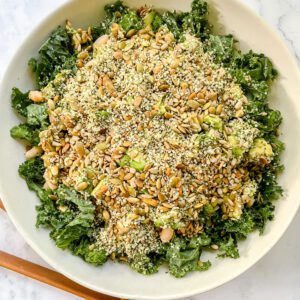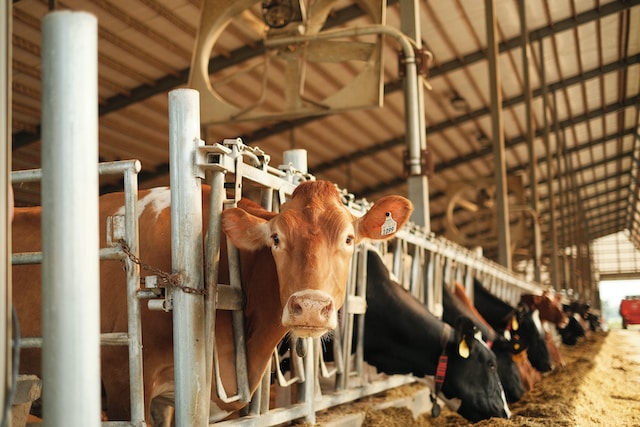Vegan Bakery Next Door to Seekers!

Sticky Fingers, a woman-owned, vegan bakery, is heading to Takoma this fall. Sticky Fingers will open a retail bakery and commercial kitchen in the space formerly occupied by Soupergirl at 314 Carroll St., NW. The opening date is tentatively set for September.
The bakery will have a retail counter for cakes, cupcakes, cookies, brownies, and buns, along with a grab-and-go section for top-selling savory items from its H Street N.E. diner, like aged and fresh vegan cheeses, vegan charcuterie, and local favorites, including Soupergirl soups.
Erica’s Incredibly Delicious Salad
Erica Lloyd writes: I’m a big fan of this salad (from recipe developer Kathleen Ashmore), which is hearty enough to be a main dish, full of healthy ingredients, and somehow also incredibly delicious (OK, it’s the maple syrup)! It’s pretty quick and easy to put together.
- 6 cups kale, de-stemmed and chopped
- ½ teaspoon Kosher salt
- 1 15-oz can of white beans
- 1 ripe avocado, diced
- ⅓ cup roasted pumpkin seeds
- ⅓ cup roasted sunflower seeds
- 1/4 cup hemp seeds
Dressing
- 1 large juicy lemon or 2 small
- 2 tsp Dijon mustard
- 1-2 tbsp maple syrup
- 1/4 tsp Kosher salt
- 1/4 tsp freshly cracked pepper
- ⅓ cup extra-virgin olive oil

Rinse the kale and spin it dry or pat very dry in a colander.
In the colander, add ½ tsp salt to the kale and massage it for 10 seconds. Set aside.
In a large serving bowl, whisk together dressing ingredients so they are smooth and incorporated.
Add the massaged kale, then beans, avocado, pumpkin seeds and hemp seeds. Toss again to incorporate. Note: If you are making ahead of time, add the avocado and seeds right before serving so the avocado stays green and the seeds stay crunchy.
Enjoy!
Why Your Non-Dairy Products Cost More . . . Part 1: The Facts About Subsidies

We mentioned in a previous post that this apparently simple question — “Why does a 5.3-oz. container of almond-milk yogurt cost $2.00 while the same size container of dairy yogurt costs as little as 60 cents?” — is actually very complicated. There’s a lot of history to understand, and a fair amount of controversy as well.
Rather than try to post a long explanation, we thought we’d chip away at the question week-by-week, slowly building a picture of what animal agriculture is really costing you, and how it got that way.
So, this week we’ll begin simply, with basic facts about U.S. government subsidies of the meat and dairy industries.
- The federal government has subsidized dairy production since 1937. A dairy price support program went into effect in 1949. There’s lots more to this story! — no conspiracies, no bad guys, just a story about a good idea gone wrong. Stay tuned.
- Currently (2021, as best we can tell), the government spends about $38 billion to subsidize dairy, eggs, and meat production.
- Most of this money is going to big corporations (that is, factory-farming businesses). If you count farmers individual by individual, two-thirds of these people received nothing from the Feds in the period 2006 – 2021. Another way of understanding this statistic: The small farm is almost nonexistent in the U.S. today.
- The milk industry is deeply in the red. In 2016, it lost about $10 for every 100 pounds of milk produced.
- Nonetheless, dairy is constantly overproduced. The federal government purchases these surpluses and stores them as cheese. As of 2019: 1.4 billion pounds of excess cheese!
- 42 percent of revenue for U.S. dairy producers came from some kind of government support.
Whew! Wonder what would happen if we allowed the dairy industry to “right-size” itself? We’ll look at that, and also take a more careful look at the history of dairy pricing, in upcoming blog posts.

